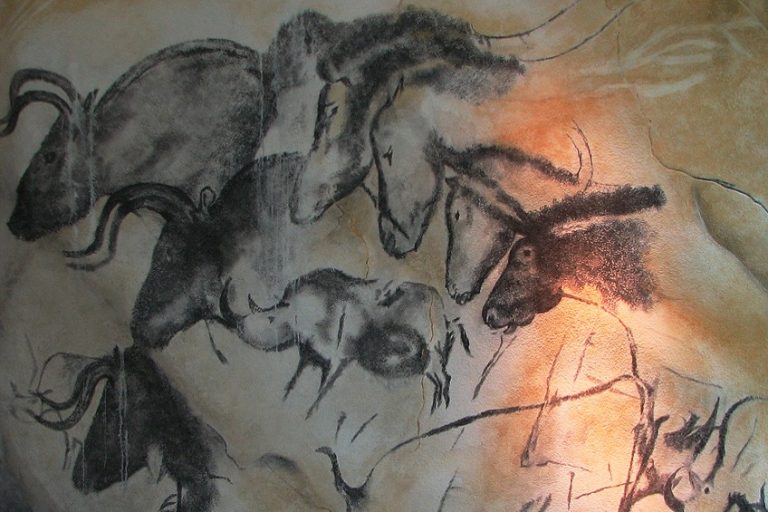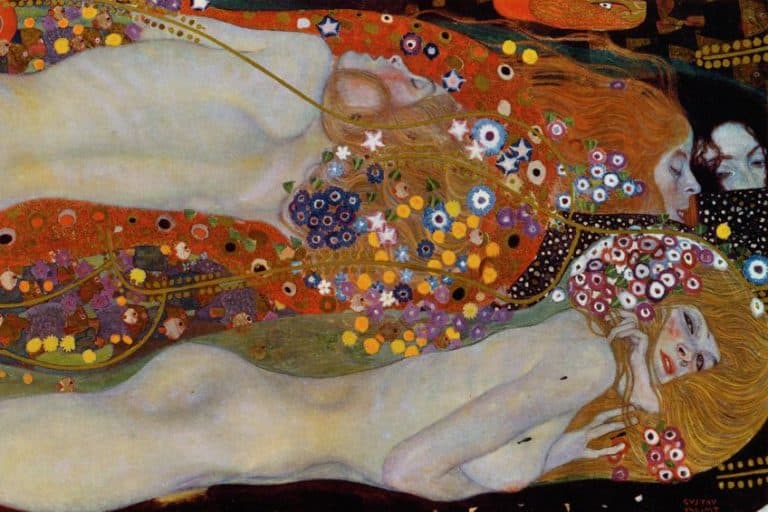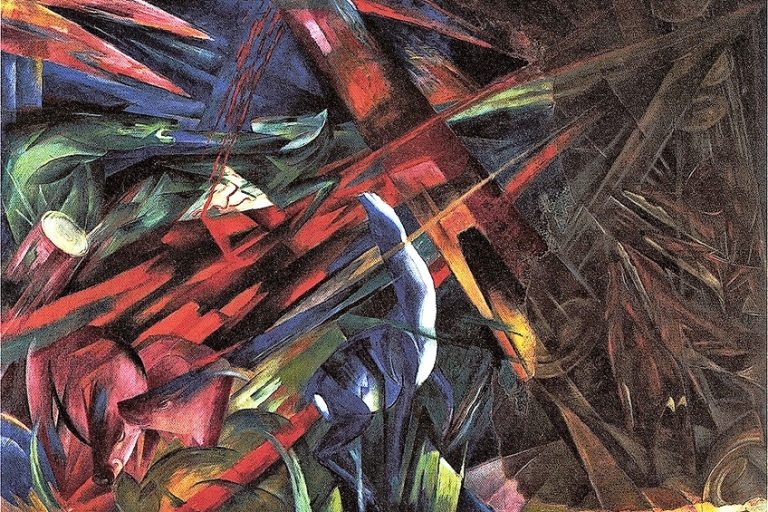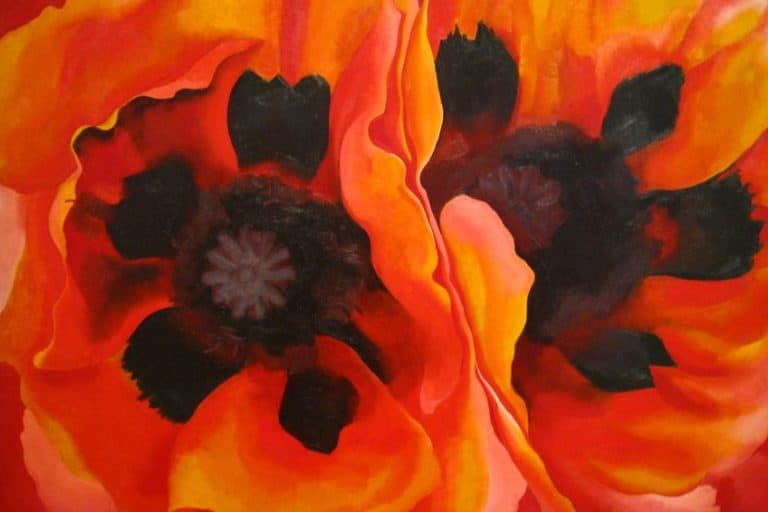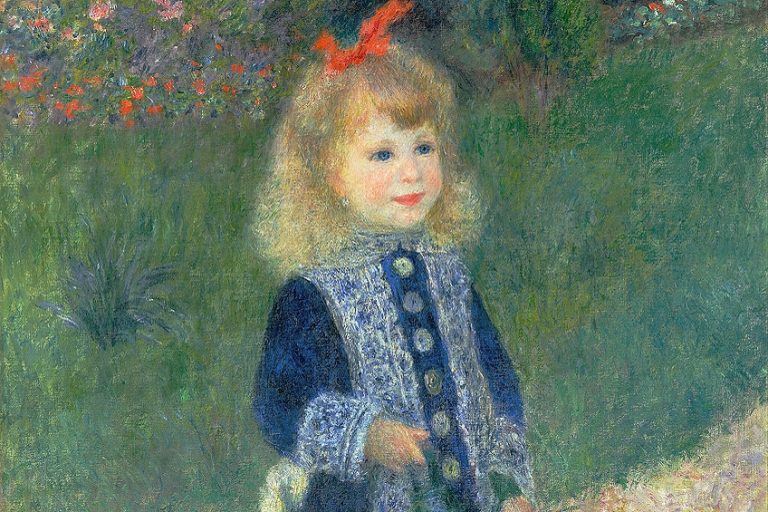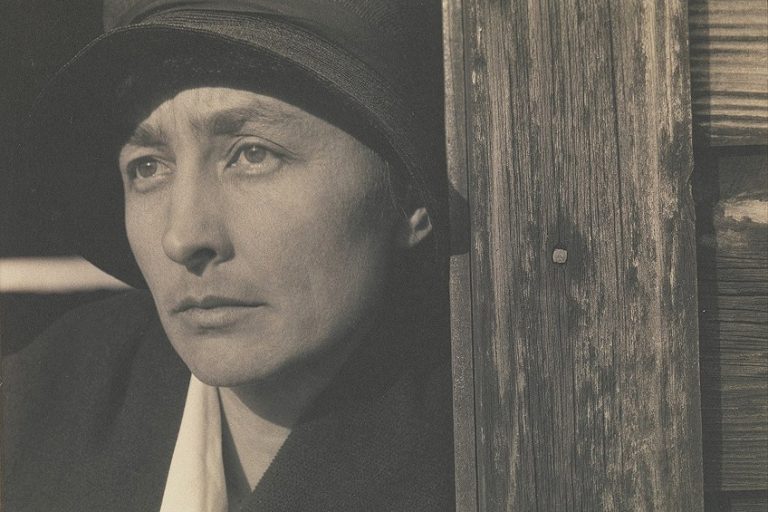“Gray Tree” by Piet Mondrian – An Abstract Cubist Artwork Analysis
Piet Mondrian’s Gray Tree stands as a pivotal work within the evolution of abstract art. Created in 1911 during his transition from representational to abstract painting, this piece exemplifies Mondrian’s exploration of geometric forms and reduction of natural subjects to their essential elements. Gray Tree marks a departure from traditional depictions of nature, showcasing Mondrian’s early experimentation with the grid and the use of limited color palettes, laying the foundation for his iconic style known as Neoplasticism or De Stijl.
Key Takeaways
- Gray Tree is a significant work by Piet Mondrian from 1911.
- It marks Mondrian’s early experimentations with Cubism and geometric abstraction.
- The painting displays curved, broad strokes against a gray, abstract background.
Context and Background
| Artist | Piet Mondrian (1872 – 1944) |
| Date Created | 1911 |
| Medium | Oil on canvas |
| Genre | Abstract art and De Stijl |
| Period/Movement | Cubism and De Stijl |
| Dimensions (cm) | 78.5 × 107.5 |
| Series/Versions | Part of Mondrian’s early tree series |
| Where Is It Housed? | Gemeentemuseum Den Haag, The Hague, Netherlands |
| What It Is Worth | Not publicly auctioned; high historical and artistic value |
Piet Mondrian, renowned for his contributions to the De Stijl movement and his abstract works, created Gray Tree in 1911 during his early experimentation with Cubism. Gray Tree is one of Mondrian’s pivotal works where he successfully merges natural representation with cubist abstraction. This painting marks a significant period in Mondrian’s artistic journey, bridging his earlier figurative studies and his later more geometric and abstract compositions.
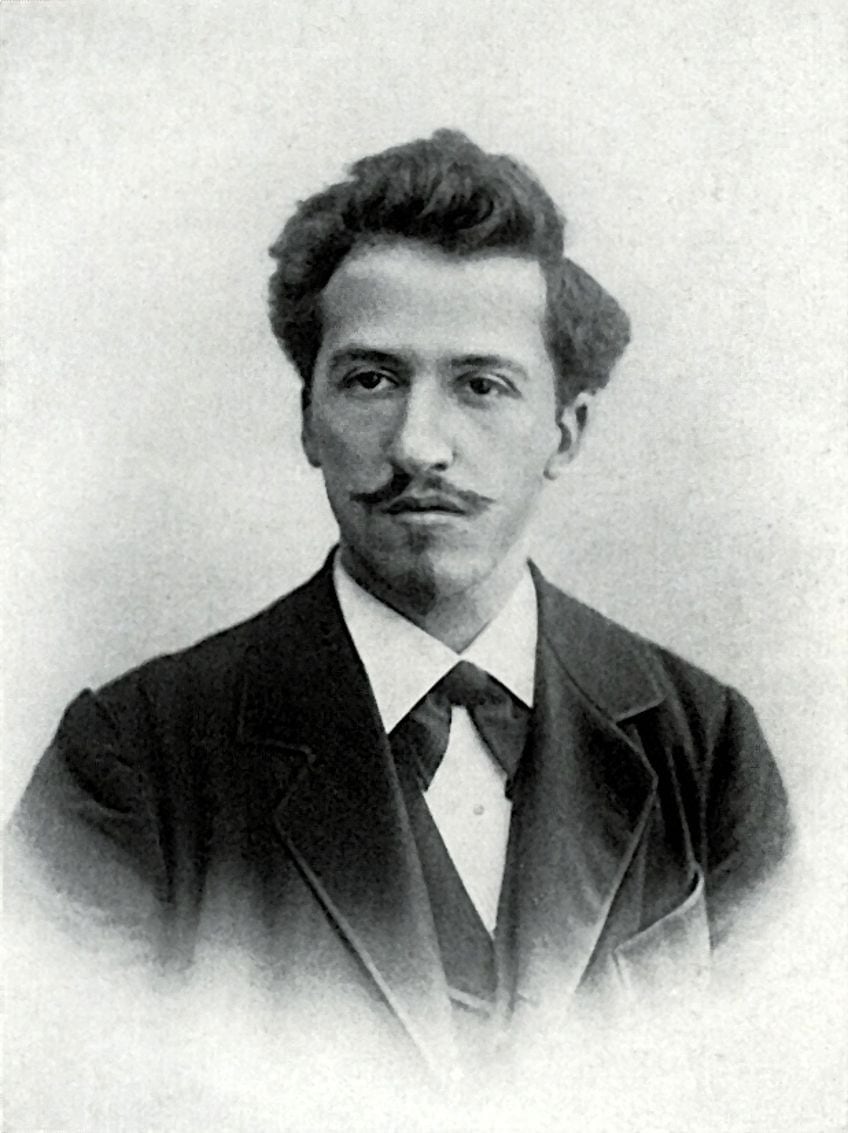
Depicting the tree with curved, broad strokes against an abstract and subdued background, Mondrian showcases his proficiency in integrating Cubism’s structural elements. The gray tones and the use of oval shapes highlight his keen interest in breaking natural forms into geometric components, a technique likely influenced by his contemporaries, including Picasso. This painting, made using oil on canvas and currently housed in the Gemeentemuseum Den Haag in The Hague, stands as a testament to Mondrian’s innovative approach. Gray Tree offers valuable insights into the evolution of his style and his methodical embrace of cubist principles, revealing an era where Mondrian navigated the delicate balance between naturalistic representation and abstraction.
Evolution of Mondrian’s Artistic Style
Piet Mondrian initially worked within the parameters of Impressionism and Symbolism. By 1908, he began integrating elements of Theosophy, aiming to represent spiritual ideas through his artwork. Mondrian’s studies of trees, including the famous Red Tree, demonstrate his transition to more abstract forms. His move to Paris in 1911 exposed him to Cubism, influencing his style towards geometric abstraction.
Over time, his work became more simplified and abstract, culminating in pieces such as Gray Tree, which combines natural forms with cubist principles.
Foundations of De Stijl Movement
Though Gray Tree predates the formation of De Stijl, it lays the groundwork for the movement. Mondrian co-founded De Stijl in 1917 with Theo van Doesburg. De Stijl sought to create a universal visual language by focusing on simple geometric forms. Mondrian’s contribution to De Stijl was significant in promoting the use of primary colors and grid-based compositions. These concepts are rooted in his early explorations, including works like Gray Tree, where he began abstracting natural forms into basic geometrical structures.

Cubism and Its Influence
Cubism, pioneered by Pablo Picasso and Georges Braque, profoundly impacted Mondrian when he moved to Paris. In Gray Tree, he applies cubist techniques to natural subjects. The tree’s form is reduced to nearly monochromatic tones and interlocking shapes, melding foreground and background. This approach represents a departure from representational art to abstraction. Mondrian’s interactions with leading Cubists in Paris were pivotal in his evolution, cementing his role in the broader Modernist movement.
The influence of Cubism is evident in his later works, which lean towards complete abstraction.
Analysis of Gray Tree
Piet Mondrian’s Gray Tree stands as a pivotal piece in his exploration of Cubism, capturing natural forms with a focus on lines, composition, and abstraction. The painting reflects his interest in deconstructing and reinterpreting the organic structure of a tree using geometric shapes and minimal colors.

Artistic Techniques and Composition
Gray Tree employs Cubist techniques to simplify and abstract the natural form of the tree. Mondrian uses curved, broad dark strokes to depict the tree’s branches, creating an interplay of lines. The composition is balanced, with the oval shape of the tree positioned centrally on the canvas. This central placement creates stability and draws the viewer’s eye.
Mondrian reduces the three-dimensional tree into lines and planes, showing his transition towards abstraction.

Use of Color and Form
The color palette in Gray Tree is notably restricted to shades of gray, black, and white. This limited palette emphasizes form over color, aligning with Mondrian’s shift towards abstraction. He avoids primary colors, focusing instead on the interplay of light and shadow. The gray background and intermingling foreground elements create a cohesive visual experience, enhancing the abstract nature of the work.
The restrained color use minimizes distractions, highlighting the structural elements of the tree.

Abstract Representation of Nature
In Gray Tree, Mondrian abstracts a natural subject, the tree, into geometric forms. The tree, while still somewhat recognizable, is depicted in a way that focuses on its essential contours and lines. This abstraction process reflects Mondrian’s move away from representational art towards a more conceptual approach. By reducing the tree to its fundamental elements, Mondrian captures the essence of the natural world through a Cubist lens, influencing future works in his career.
The tree theme continues in his later pieces, evolving into even greater levels of abstraction.

The Reception and Conservation of Gray Tree
By examining the critical response and ongoing preservation efforts, one can appreciate the continued impact of Mondrian’s Gray Tree on the art world.

Critical Reception and Interpretation
Gray Tree received significant attention from art critics and scholars. Its blend of natural form with cubist abstraction marked a bold step in modernist art. European painters and modernists praised Mondrian’s daring method of blending detailed subject matter with geometric abstraction. Critics noted how Mondrian’s style evolution paralleled those of other leading artists of the Cubist movement.
This work also sparked deep analysis among art historians regarding its symbolic use of color and form.
Preservation and Display
Gray Tree is currently housed at Gemeentemuseum Den Haag in The Hague. The museum has undertaken meticulous conservation measures to preserve the painting’s integrity. Due to its age and the delicate nature of oil paint, the work undergoes regular examination to prevent deterioration. Climate-controlled environments and specialized lighting help maintain the painting’s original colors and textures. The display also includes informative plaques and digital resources that enlighten visitors about the artwork’s historical context and creation.

Legacy and Influence of Gray Tree
Gray Tree has left an indelible mark on the art community, influencing subsequent generations of abstract and modernist artists. Its unique approach to blending abstraction with natural forms inspired numerous contemporary art movements. The painting is frequently referenced in art history courses and scholarly works as a major milestone in Mondrian’s career. It also has been a subject in various exhibitions and retrospectives, reaffirming its lasting impact on the evolution of modern art. In conclusion, Gray Tree continues to be a touchstone example of innovative artistic expression within the early 20th century.
Piet Mondrian’s Gray Tree encapsulates a transformative period in the artist’s career and the broader landscape of modern art. Through its simplified yet evocative depiction of a tree, Mondrian laid the groundwork for his iconic abstract style, which would significantly influence the development of 20th-century art movements. Gray Tree remains a testament to Mondrian’s innovative approach to form, color, and composition, leaving an indelible mark on the history of abstraction and artistic expression.
Frequently Asked Questions
What Does the Tree Symbolize in Piet Mondrian’s Artwork?
Gray Tree represents Mondrian’s transition from naturalistic depictions to abstract forms. The tree symbolizes the interplay between structure and abstraction, reflecting his exploration of Cubism and the simplification of forms.
How Does Piet Mondrian’s Gray Tree Fit into His Artistic Evolution?
The painting marks a pivotal point in Mondrian’s career. Created in 1911, Gray Tree demonstrates his shift from realistic landscapes to Cubist abstractions. This work lays the groundwork for his later, more recognizable style featuring grids and primary colors.
In What Artistic Style Is Piet Mondrian’s Gray Tree Painted?
Gray Tree is painted in an early Cubist style. Mondrian applied Cubist principles to natural subjects, breaking down the tree into angular, geometric shapes. This approach allowed him to explore new artistic possibilities beyond traditional representation.
What Are the Notable Characteristics of Piet Mondrian’s Gray Tree?
Gray Tree features a monochromatic palette with intermingled foreground and background elements. The painting’s structure is defined by angular forms and limited color use, which highlight Mondrian’s emerging Cubist techniques. The painting measures 78.5 by 107.5 cm and is housed at the Gemeentemuseum Den Haag in The Hague.
Isabella studied at the University of Cape Town in South Africa and graduated with a Bachelor of Arts majoring in English Literature & Language and Psychology. Throughout her undergraduate years, she took Art History as an additional subject and absolutely loved it. Building on from her art history knowledge that began in high school, art has always been a particular area of fascination for her. From learning about artworks previously unknown to her, or sharpening her existing understanding of specific works, the ability to continue learning within this interesting sphere excites her greatly.
Her focal points of interest in art history encompass profiling specific artists and art movements, as it is these areas where she is able to really dig deep into the rich narrative of the art world. Additionally, she particularly enjoys exploring the different artistic styles of the 20th century, as well as the important impact that female artists have had on the development of art history.
Learn more about Isabella Meyer and the Art in Context Team.
Cite this Article
Isabella, Meyer, ““Gray Tree” by Piet Mondrian – An Abstract Cubist Artwork Analysis.” Art in Context. June 20, 2024. URL: https://artincontext.org/gray-tree-by-piet-mondrian/
Meyer, I. (2024, 20 June). “Gray Tree” by Piet Mondrian – An Abstract Cubist Artwork Analysis. Art in Context. https://artincontext.org/gray-tree-by-piet-mondrian/
Meyer, Isabella. ““Gray Tree” by Piet Mondrian – An Abstract Cubist Artwork Analysis.” Art in Context, June 20, 2024. https://artincontext.org/gray-tree-by-piet-mondrian/.




